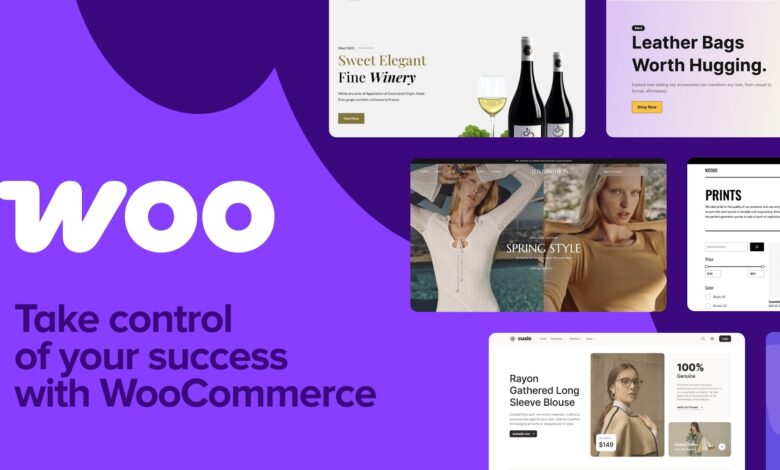Crafting the Future of Woo: A Brand Identity Transformation

Brand Evolution at WooCommerce: A Message from Our CMO
As our Chief Marketing Officer, Tamara Niesen, emphasized in her recent communication, our brand is a crucial asset for our business and the entire Woo ecosystem. It sets the bar for all those involved in building, innovating, and empowering the WooCommerce stores that cater to millions of buyers.
Our new brand signifies our growth and ambitions, serving as the gateway to our virtual home — the first impression for visitors, returning users, and potential WooCommerce adopters. It establishes the tone and vision for everything that follows.
Rebranding a long-standing entity like Woo was a challenging endeavor that required careful consideration. However, it was a necessary step to enhance our voice and showcase our evolution in how we present ourselves. This change signals our maturity and signifies our commitment to merchants, developers, and partners to be the platform of choice for those seeking true ownership of their online stores.
Furthermore, the new brand mirrors the competitive landscape as we face increasing competition from SaaS providers. It aims to boost brand recognition, foster direct connections with merchants, and provide the necessary support for WordPress hosts to thrive. The updated brand achieves this by reinforcing our core values, enhancing the perception of the Woo product, and facilitating seamless customer engagement for hosts.
When embarking on the design journey, our goal was to preserve the essence of Woo — the playful, joyful essence encapsulated in the logo and name — while crafting a brand that seamlessly extends across marketing and product realms. We aimed for a mature yet approachable look, steering clear of excessive formality or overly whimsical elements.
The entire design process was spearheaded by Woo’s in-house design team, who dedicated significant time and effort alongside their ongoing product and business responsibilities. Despite the challenges, the team’s dedication paid off, resulting in a brand identity that aligns with our vision.
Initially, the design process involved multiple rounds of brainstorming and sketching, exploring various concepts from tweaking the speech bubble to experimenting with commerce-related imagery before arriving at the symbolic representation of a shopping cart — a subtle nod to our brand heritage.
Following an initial workshop and thorough deliberation, we opted to pursue a direction that embraced change rather than mere cosmetic updates or incremental enhancements. This decision prompted a series of iterations, refinements, and fine-tuning stages, during which we engaged with community members to gather feedback on our evolving design direction.
During these interactions, Beau Lebens, Artistic Director of Woo, and I delved into not only the new brand identity but also our product roadmap, community pain points, and the support needed to empower our community in delivering exceptional experiences with Woo. This feedback significantly influenced our brand guidelines, social initiatives, and various facets of the update, slated for rollout in the coming months.
These discussions instilled confidence in our approach, prompting us to offer a sneak peek of the new brand at WooSesh. The positive feedback received post-reveal reaffirmed that we were heading in the right direction.
While the brand launch marks a significant milestone, it is just the beginning of our journey. Elevating our design ethos entails developing a robust product that boasts improved user experience, consistency, and effectiveness for all merchants on our platform.
With initiatives like More in Core, Analytics beta release, and investments in WooPayments, Themes, Block Checkout, Shipping, Order Statuses, among others, we have a slew of updates in the pipeline that underscore our commitment to enhancing the WooCommerce experience for millions of users.
This renewed focus has also prompted us to reevaluate our release processes, addressing issues such as test reliability, pull request reviews, and release cadence. WooCommerce now follows a five-week update cycle, ensuring thorough beta testing before each new release. For more insights, Core Product Manager James Kemp delves into this topic in a recent episode of the Do the Woo podcast.
At the core of design lies the concept of visualizing ideas, and what better way to showcase our creative endeavors than by sharing glimpses of the designs we are crafting. These visual explorations, crafted by our talented designers at Automattic, offer a preview of how the new brand identity may manifest in our marketing and product offerings.
One highly requested product, WooCommerce Point of Sale, is currently undergoing testing and is set to launch soon, promising a seamless integration for merchants selling both online and in physical stores.
Additionally, Order Fulfillment, scheduled for release in Q2 2025, is a collaborative effort between Woo and the community, addressing critical aspects such as order management, tracking visibility within WooCommerce, and customer communication.
Looking ahead, we are gearing up to unveil a series of WooCommerce-centric themes, designed with a block-based approach to enhance user experience and conversion rates. These themes will feature our high-converting block checkout, which is undergoing further optimizations to boost its conversion performance.
Moreover, business owners are set to benefit from enhanced data analytics capabilities with the upcoming Order Attribution feature, paving the way for a comprehensive analytics solution native to WooCommerce, slated for release in 2025.
Among other strategic initiatives in the pipeline are improvements in payments, reporting, and a revamp of Woo’s settings to streamline user experience. Stay tuned for more updates on these fronts as we continue to evolve our product offerings.
Frequently Asked Questions
-
Why was rebranding necessary for WooCommerce?
Rebranding was essential for WooCommerce to reflect our growth, maturity, and evolving market dynamics. It was a strategic move to enhance brand awareness, strengthen merchant connections, and align with our vision for the future.
-
How did the community influence the rebranding process?
Community feedback played a pivotal role in shaping our brand guidelines, social initiatives, and overall design direction. Engaging with community members helped us validate our approach and ensure that our brand resonates with our diverse user base.
-
What are some key features of the new brand identity?
The new brand identity embodies a balance of maturity and playfulness, reflecting Woo’s core values while appealing to a broad audience. It aims to enhance brand perception, facilitate seamless user interactions, and drive engagement across various touchpoints.
-
How will the new brand impact WooCommerce’s product roadmap?
The new brand identity aligns with our vision for product innovation and user-centric design. It sets the stage for a series of upcoming releases, including enhancements to core features, new themes, improved analytics capabilities, and streamlined user experiences.
-
What can users expect from WooCommerce in the coming months?
Users can look forward to a host of updates and new features aimed at enriching their experience with WooCommerce. From enhanced themes and analytics tools to streamlined checkout processes and improved order management, we are committed to delivering a superior e-commerce platform for our users.
About
Daniel Nieuwenhuizen
Daniel Nieuwenhuizen is a seasoned designer with over 15 years of experience in branding and product design, having worked with a diverse range of clients from high-growth startups to global brands. As the leader of the Design team at Woo, Daniel brings a wealth of expertise in crafting compelling brand experiences. He is also actively involved in advising early-stage founders and teaching UX design. Based in London, UK, Daniel is dedicated to driving innovation and excellence in design.

